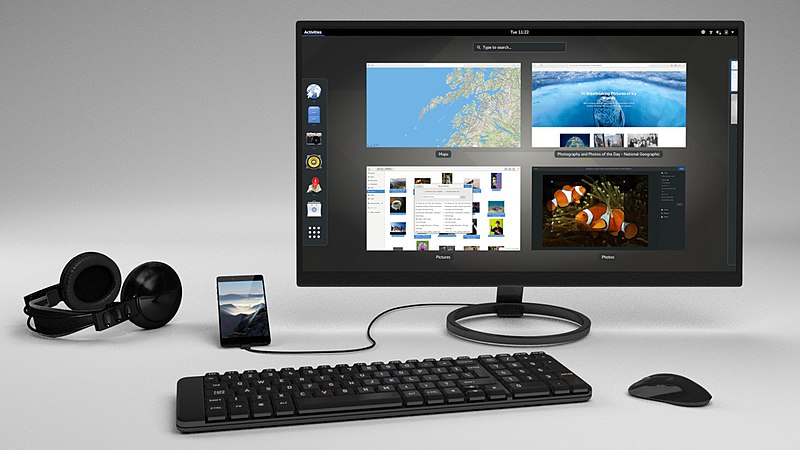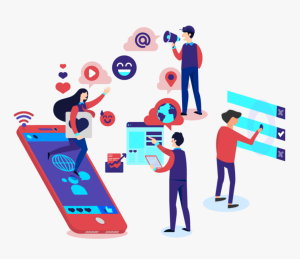The Information Age

Though the Defense Department technically created the internet for a defense and academic project in the mid-1970s, access to the internet became available to the general public in 1991 and kicked off the most recent revolution in communication: The Information Age. The internet 1) provided the opportunity for the convergence of multiple forms of technology, 2) facilitated the widespread availability of information, and 3) allowed users on the network to create and share content easily. The internet provides access to such a wealth of information that some people jest that seeking information using it can feel like trying to take a drink from a fire hose, and the simile fits.
The term zettabyte (a 1 followed by 21 zeroes) was introduced to help define the scope of information created by the wealth of new technological tools (Blair, 2010). A zettabyte represented the amount of information projected for all of humanity to create during the year 2010. In comparison, an IBM supercomputer estimated that the amount of information created by the culmination of humanity previously amounted to five exabytes (Rieland, 2012), which is a paltry 1/1000th of a zettabyte. While a statistical debate currently rages as to the accuracy of these numbers, a core truth remains evident.

Thanks in part to the vast array and ever-growing repertoire of tools available for creating and sharing information, the human race has entered the Information Age, which future societies may view as a turning point for this species. This radical transformation, however, inspires the natural human tendency toward anxiety. Communication technology continues to advance further with each passing year, presenting ever-approaching potential for rapid or radical change to occur, even for those born into the Information Age who know no other reality. When this natural fear of radical change combines with feeling overwhelmed by the ever-present onslaught of information—some useful, but mostly not—one begins to see that the Information Age comes with many hazards. This does not suggest the proverbial sky is falling, so speak, as a click glance at the history of communication technology reveals such a claim does not lack historical precedent.
Wurman (1989) famously proposed that, “A weekday edition of The New York Times contains more information than the average person was likely to come across in a lifetime in seventeenth-century England” (p. 32). Furthermore, he suggested that, for one to be a successful member of modern society, one must “assimilate a body of knowledge that is expanding by the minute” (p. 32). Taking into account that Wurman wrote this two full years before the release of the internet to the general public, this proposition becomes more salient now more than ever.
Information has become easier to create and share with others through an increasingly networked society. As a result, the dissemination characteristics of information have altered the behaviors of certain types of organizations, particularly the well-networked and well-funded legacy media industries such as journalism, book publishing, filmmaking, and music producing. In the past, to get a book published, an author had to write the tome, polish it to perfection, and spend months, if not years, querying agents and publishers in hopes that someone would find it worthy of publication. Similarly, with music producing, artists would often play free shows with the hopes of getting “discovered” by talent agents who may occasionally descend from their ivory towers to offer recording contracts.
The Information Age, however, has turned these industries inside out and upside down. Anyone with a desire, a computer, and an internet connection can publish a book, article, song, or film. As a result, the information marketplace has become flooded to the point of supersaturation with information across various media. Companies such as Netflix and Spotify rose to fill the role of information curators—organizations whose sole purpose consisted of sifting through the tide of new production, extracting the best, and presenting it for all to consume. The deluge of emerging information often sacrifices quality for timeliness in an attempt to provide the first (rather than most accurate) viewpoint on current events, as seen in the changing nature of journalism and the 24-hour news cycle. As the world’s technological infrastructure becomes more efficient at the creation and distribution of new information, this trend will likely continue.
This trend has inspired the transformation of the information marketplace from one that purports to sell media tailored to consumers’ needs into one that simply competes for attention. The information marketplace has not made getting a drink from the fire hose easier; it has simply presented more fire hoses from which to choose. As a result, the information marketplace now runs as an attention economy (Davenport & Beck, 2001). Herbert Simon (1971), writing years before the Information Age, stated the following:
…in an information-rich world, the wealth of information means a dearth of something else: a scarcity of whatever it is that information consumes. What information consumes is rather obvious: it consumes the attention of its recipients. Hence a wealth of information creates a poverty of attention and a need to allocate that attention efficiently among the overabundance of information sources that might consume it.
The COVID-19 Pandemic made this battle for attention palpable in many students’ lives, as campus shutdowns forced them to adapt to online learning. Many found it difficult to maintain focus in virtual classrooms. As Gillick and Magoulias (2020) noted, “It is far too easy to open up another browser tab, turn on some music, or check your Instagram when you are using your computer/phone/tablet to do schoolwork.” Multi-teching – the act of switching between multiple electronic information sources at one time – became a common practice, adversely impacting students’ ability to remain focused on their schoolwork.
As attention spans become taxed and more fragile with each passing day, organizations operating within an attention economy will need to compete more ruthlessly for the attention of potential consumers. Consumers now face the unique complication of dealing with anxiety caused by their attention spans getting pulled in several directions simultaneously.

